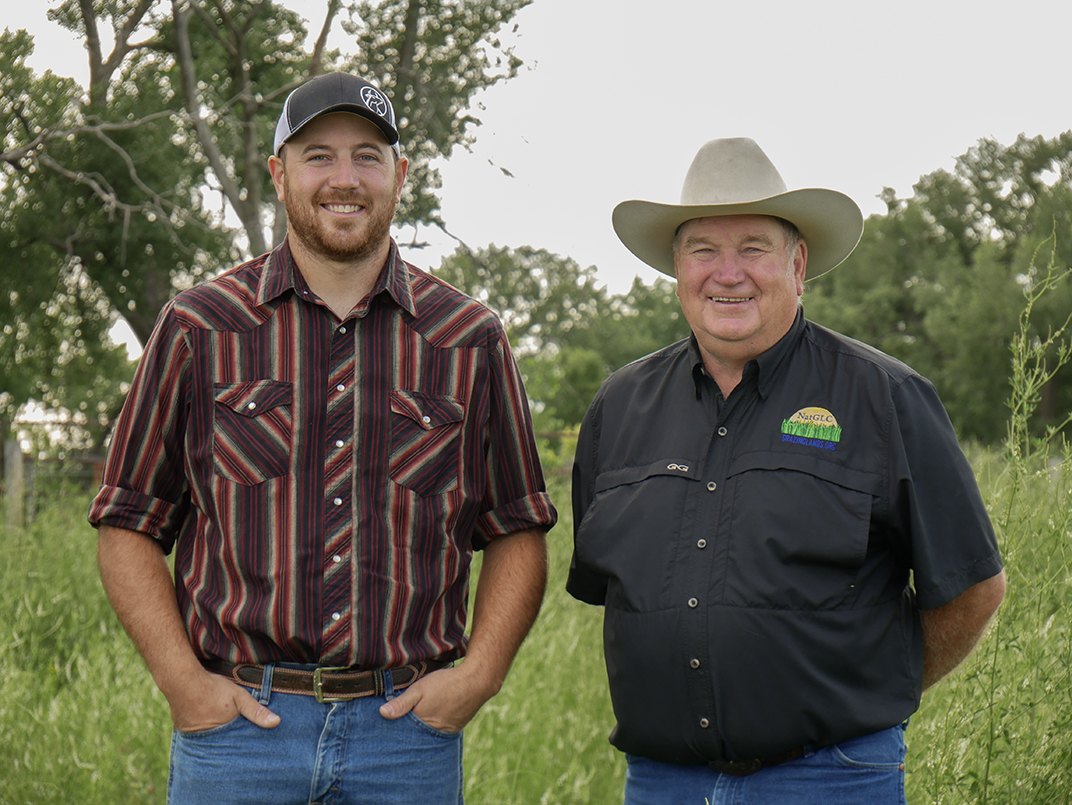
Recognizing the positive role cattle play in advancing sustainability, companies and other agriculture stakeholders are increasingly investing in efficiency and resiliency at the ranch level. This gives new opportunities to ranchers to make improvements to their land and herds.
The world’s largest fast-food chain is one such company. McDonald’s wants to support cattle producers in their efforts to increase overall herd efficiencies, while at the same time enhancing soil and grassland health.
To accomplish this, McDonald’s along with one of their suppliers, OSI Group, teamed up with AgSpire to provide cattle producers with expert advice, resources, and funding through the Ranching for the Future program.
“It’s so rewarding to walk alongside cattle producers in their quest for improvement,” explained food animal veterinarian, Dr. Kristina Porter.
Porter is among the team of Technical Advisors at AgSpire who support producers by understanding the operations’ existing management practices and overall herd health to determine if there are any operational efficiencies that could be gained through enhanced genetics or implementation of other customized management practices, like interseeding rangeland or pastures with native or non-native perennial grasses.
“Cattle margins are pretty small, so to be able to suggest customized practices that a producer can try out with less risk because the costs are covered is pretty exciting,” Porter said.
Third-generation North Dakota rancher Karl Bartholomay agreed. For decades, Karl and his dad, Keith, have focused on implementing conservation practices on more than 4,000 acres of cropland, native range, river bottoms, and pastures that make up Bartholomay Kattle Kompany near Sheldon, North Dakota.

And their efforts have been rewarded. As their grassland and soil health have continued to improve, so have overall herd health and efficiency. And another bonus – today an abundance of wildlife now call their ranch home.
“As our rotational grazing intensified, we began to see more wildlife,” Karl said. “It is fun to see the cows interact with the pheasant, deer, turkeys, and grouse that wander through while they are grazing. It is nice to see that by implementing regenerative practices we are not only helping our own operation – the land and cattle – we are helping the whole ecosystem. Everything goes hand-in-hand.”
Karl said he and his dad will continue to do more as funding allows. But finding funds for conservation practices has been a challenge. “We discovered that most cost-share programs are for ranchers who were just getting into conservation. And then we connected with AgSpire and their SustainAg Network,” Karl said.
The Bartholomays recently enrolled in the Ranching for the Future program. After Porter and an agronomist visited the ranch, they determined that interseeding pastures with perennial legumes would further enhance the ranch’s grassland health.
“Interseeding is something we have wanted to do, because it could make a big jump in species diversity in a short timeframe. But the cost is something we need to consider because this ranch needs to support my family and my mom and dad,” explained Karl.
“In agriculture, the greatest resources we have are our soil and our kids who we want to be able to return to the farm or ranch,” Porter said.
She explained regenerative practices – like increasing grassland diversity – have a positive impact on soil health, while also improving the overall health of grazing cattle. “Cattle thrive on grass because every species of grass matures at a different time. By increasing species diversity, there will be quality forage for cattle throughout the grazing season,” Porter said.
By Lura Roti for AgSpire
Learn More:
- Ranching for the Future Program Details
- Read the full article on BEEF Magazine Online
- In 2023, the Bartholomay Kattle Kompany was recognized in North Dakota for their sustainability efforts with the national Leopold Conservation Award.
 Visit the SustainAg Network
Visit the SustainAg Network